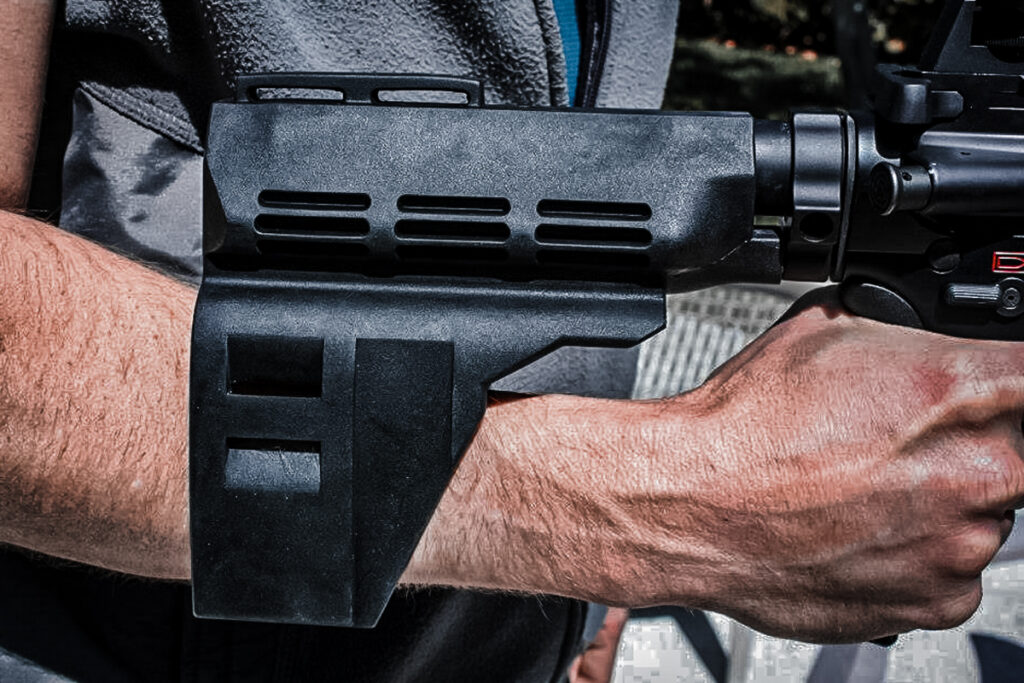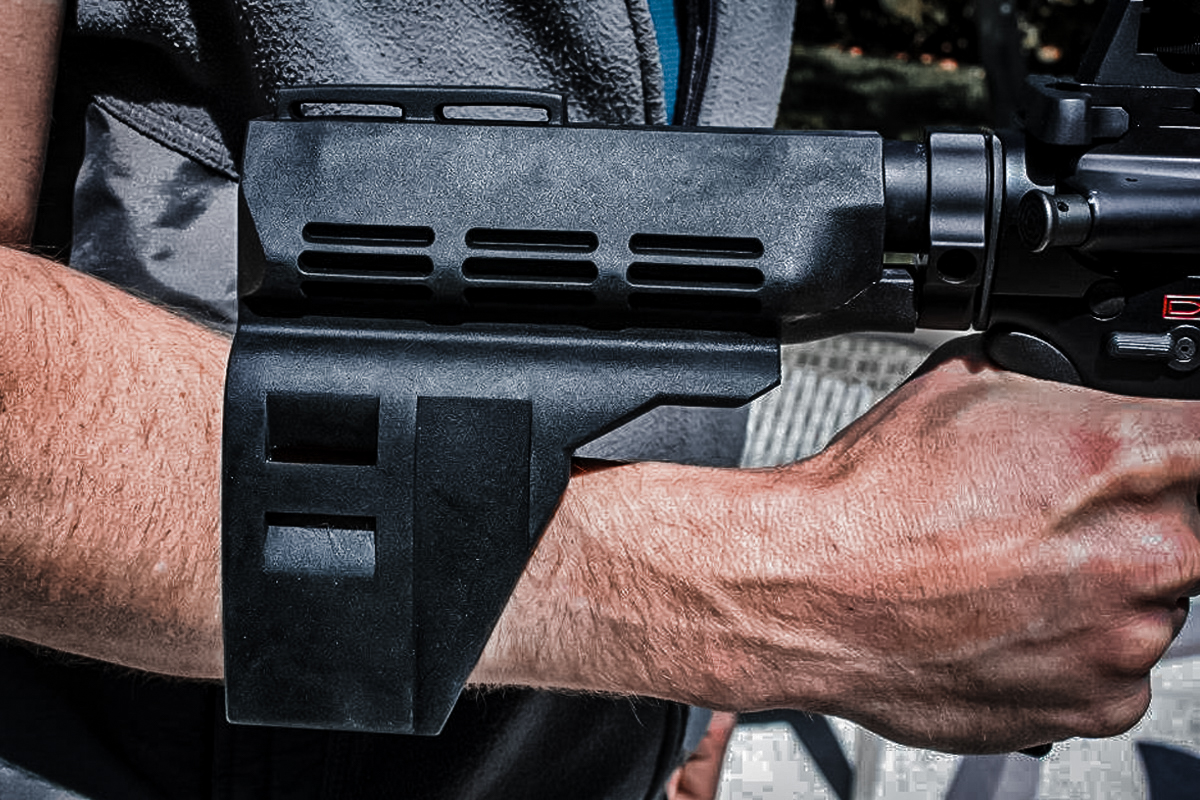
Why Are Pistol Braces Illegal? Unpacking the Legal Landscape
The legality of pistol braces has become a hotly debated topic in the United States. If you’re wondering, “why are pistol braces illegal?”, you’re not alone. This article aims to provide a comprehensive and authoritative overview of the legal complexities surrounding pistol braces, exploring the reasons behind their regulation, the relevant laws, and the potential consequences for gun owners. We’ll delve into the ATF’s evolving stance, the arguments for and against regulation, and what the future may hold for this controversial accessory. This is not legal advice, and you should consult with an attorney for guidance on your specific situation.
Understanding the Legal Definition of a Pistol Brace
To understand why pistol braces are under scrutiny, it’s crucial to define what they are and how they function. A pistol brace, also known as a stabilizing brace, is an accessory designed to be attached to the rear of a pistol, ostensibly to provide support and stability when firing with one hand. The original intent, as marketed by manufacturers, was to assist disabled shooters in operating pistols more effectively.
However, the ATF (Bureau of Alcohol, Tobacco, Firearms and Explosives) has taken the position that many pistol braces effectively convert pistols into short-barreled rifles (SBRs). Under the National Firearms Act (NFA) of 1934, SBRs are subject to strict regulations, including registration, taxation, and limitations on transfer. The key issue revolves around whether a pistol equipped with a brace is “designed, redesigned, made or remade, and intended to be fired from the shoulder.” If the ATF determines that a brace transforms a pistol into a shoulder-fired weapon, it falls under the purview of the NFA.
The ATF’s Evolving Stance on Pistol Braces
The ATF’s position on pistol braces has shifted significantly over time, leading to considerable confusion and frustration among gun owners. Initially, the ATF issued several opinion letters approving certain pistol brace designs, stating that they did not automatically convert pistols into SBRs. These letters generally emphasized that the intended use of the firearm, rather than the mere presence of the brace, was the determining factor.
However, in recent years, the ATF has reversed course, arguing that many pistol braces are, in fact, designed to be shouldered, thereby transforming pistols into SBRs. This change in interpretation culminated in the issuance of a final rule in January 2023, titled “Factoring Criteria for Firearms with Attached ‘Stabilizing Braces.'” This rule significantly broadened the criteria used to determine whether a braced pistol constitutes an SBR, leading to widespread concern among gun owners who possessed these firearms.
The “Factoring Criteria” and Its Implications
The ATF’s “Factoring Criteria” rule outlines a series of factors that the agency considers when determining whether a braced pistol is an SBR. These factors include:
- The design and construction of the brace
- The intended use of the firearm
- The marketing materials and advertising for the brace
- The manner in which the firearm is held and fired
- The overall length of the firearm
Under the rule, if a firearm with a brace is determined to be “designed, made, or intended to be fired from the shoulder,” it is classified as an SBR and subject to NFA regulations. This determination is highly subjective and based on a totality of the circumstances, making it difficult for gun owners to ascertain whether their braced pistols are legal.
The Legal Arguments For and Against Pistol Brace Regulation
The debate over the legality of pistol braces is fueled by strongly held beliefs on both sides. Proponents of regulation argue that braced pistols effectively circumvent the NFA’s restrictions on SBRs, posing a threat to public safety. They contend that these firearms are easily concealable and can be used in criminal activities, making them a danger to law enforcement and the general public. Furthermore, they argue that the ATF’s initial approvals of pistol braces were a mistake, as they created a loophole that allowed individuals to acquire SBR-like weapons without undergoing the necessary background checks and registration requirements.
Opponents of regulation argue that the ATF’s actions are an overreach of authority, infringing on the Second Amendment rights of law-abiding citizens. They argue that pistol braces are legitimate accessories that enhance the usability of pistols for individuals with disabilities or those who simply prefer a more stable shooting platform. They point out that the ATF’s shifting interpretations of the law have created uncertainty and confusion, leaving gun owners vulnerable to prosecution for possessing firearms that were previously deemed legal. Moreover, they argue that the “Factoring Criteria” rule is vague and arbitrary, giving the ATF excessive discretion to classify firearms as SBRs based on subjective factors.
The Second Amendment Implications
The legal challenges to the ATF’s pistol brace rule often raise Second Amendment concerns. Opponents argue that the rule infringes on the right to keep and bear arms by effectively banning a common and popular firearm accessory. They contend that the ATF’s actions are not narrowly tailored to achieve a legitimate government interest, as they sweepingly restrict the possession of braced pistols without adequately considering the rights of law-abiding gun owners. Moreover, they argue that the rule violates due process by failing to provide clear and objective standards for determining whether a braced pistol is an SBR.
Consequences of Non-Compliance with NFA Regulations
The consequences of violating the NFA can be severe. Unregistered SBRs are subject to forfeiture, and individuals found in possession of such weapons can face criminal charges, including:
- Up to 10 years in prison
- Fines of up to $250,000
- Loss of the right to own firearms
Given these potential penalties, it is crucial for gun owners to understand the legal requirements for owning and possessing braced pistols and to ensure that they are in compliance with all applicable federal and state laws.
Options for Gun Owners Affected by the Rule
Following the ATF’s final rule, gun owners who possessed braced pistols were faced with several options:
- Register the firearm as an SBR: This involves submitting an application to the ATF, paying a $200 tax stamp, and undergoing a background check.
- Remove the brace and reconfigure the firearm: This involves removing the brace and ensuring that the firearm is no longer designed to be fired from the shoulder.
- Turn the firearm in to the ATF: This involves surrendering the firearm to the ATF without compensation.
- Destroy the firearm: This involves destroying the firearm in a manner that renders it unusable.
The ATF initially offered a tax amnesty period, allowing gun owners to register their braced pistols as SBRs without paying the $200 tax stamp. However, this amnesty period has since expired.
The Future of Pistol Brace Regulation
The legal battle over pistol braces is far from over. Several lawsuits have been filed challenging the ATF’s final rule, arguing that it is unconstitutional and exceeds the agency’s authority. These lawsuits are likely to continue to wind their way through the courts for years to come, potentially reaching the Supreme Court. In the meantime, the legality of pistol braces will remain a contentious issue, subject to ongoing legal and political debate.
State Laws and Regulations
It is important to note that state laws regarding pistol braces may vary. Some states have laws that mirror the NFA, while others have more lenient regulations. Gun owners should consult with legal counsel to ensure that they are in compliance with all applicable state and local laws.
The Impact on the Firearms Industry
The changing regulations surrounding pistol braces have had a significant impact on the firearms industry. Manufacturers of pistol braces have faced increased scrutiny and uncertainty, leading to a decline in sales and potential legal challenges. Gun stores have also been affected, as they must navigate the complex legal landscape and ensure that they are not selling firearms that violate the NFA. The uncertainty surrounding pistol braces has also led to a decrease in consumer confidence, as gun owners are hesitant to purchase these accessories for fear of future regulatory changes.
The Importance of Legal Counsel
Given the complexities and uncertainties surrounding pistol brace regulation, it is essential for gun owners to seek legal counsel from a qualified attorney. An attorney can provide guidance on the applicable federal and state laws, assess the legality of specific firearms and accessories, and represent gun owners in legal proceedings if necessary. Seeking legal counsel is the best way to ensure that you are in compliance with the law and to protect your Second Amendment rights.
Staying Informed on Evolving Regulations
The legal landscape surrounding firearms is constantly evolving, making it crucial for gun owners to stay informed about new laws and regulations. Regularly consult with reputable sources of information, such as legal experts, firearms organizations, and government agencies, to stay up-to-date on the latest developments. Proactive awareness is the best defense against unintentional violations and ensures responsible gun ownership.
Navigating the Complexities of Pistol Brace Legality
The question of “why are pistol braces illegal” is not a simple one. As we’ve explored, the answer lies in the evolving interpretations of federal law, the ATF’s changing stance, and the ongoing legal challenges. While the future of pistol brace regulation remains uncertain, one thing is clear: gun owners must stay informed, seek legal counsel when necessary, and comply with all applicable laws to avoid potential penalties. Understanding the nuances of these regulations protects both your rights and the safety of the community. It’s a balancing act that requires diligence and a commitment to responsible gun ownership.

